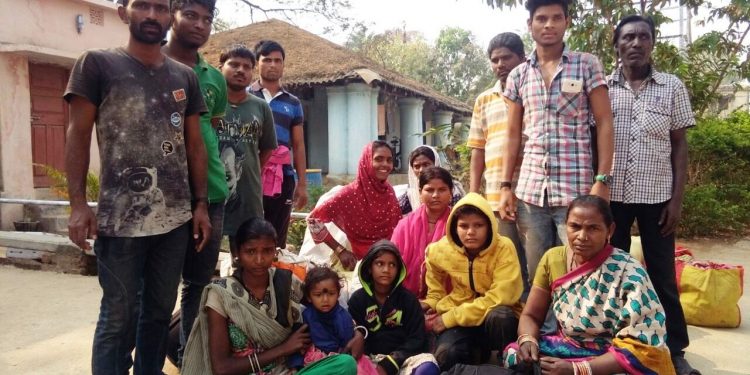Bhawanipatna: Several incidents of bonded labourers dying at workplaces in other states have been reported in the past.
However, the district administration has done little to curb the ever-growing menace and rehabilitate bonded labourers. As a few persons return home dead, several others are cremated or at times thrown in open at their workplaces for want of money.
Rehabilitation programmes taken up by the state government and Kalahandi district administration has been a mockery. In 2013, a sardar (middleman) chopped off hands of two bonded labourers of Pipalguda under Jayapatna block in the district which had then created a havoc across the state.
A fact finding team of the human rights commission, scores of political leaders and district administration officials had visited the village and assured the victims of help. However, the problem has not yet been addressed.
According to the labour department, as two bonded labourers had died outside their homeland in 2009, the figure of death cases was one in 2010 and four in 2012. Likewise, death cases reached ten in 2013, two in 2014, three in 2015, eight in 2016, five in 2017, four in 2018 and five in 2019, which are much more as per private data.
About 200 bonded labourers from Dandapat area under Dharmagarh block had migrated to outside the state and died there. Similarly, hundreds of bonded labourers from Lanjigarh, Junagarh, Thua Rampur and Koksara are reportedly working in Gujarat, Andhra Pradesh, Kerala, Goa and Tamil Nadu, official sources said.
The menace is growing due to the failure of the district administration to give people enough work under the Mahatma Gandhi National Rural Employment Guarantee Act (MGNREGA). A substantial increase in the number of unemployed youths in Kalahandi has also given rise to the ever-growing bonded labour problem in the district.
Assistant Lobour Commissioner of Kalahandi Pradeep Mohanty said, “Some people are being lured by sardars (middlemen) and they migrate to outside of the state with them without furnishing adequate information before the district labour department”.
Labour department has manifold schemes for the benefit of labourers. Those who register their names with this department can avail the benefits of welfare schemes of the state government, he informed.
Achievements of the district administration in this regard have been outshined by the perennial problem of unemployment and poverty-stricken bonded labourers in Kalahandi district. Stuck between devil and deep sea, they still strive hard to eke out a living, a report said.
Although the state government has recently come forward to prevent illegal trafficking of bonded labourers, yet no one is serious about their employment. Under compulsion, the labourers borrow money from creditors to meet their household expenses and are compelled mostly to work under hazardous work atmosphere.
Notably, incidence of forced labour and debt bondage are common practices across all economic sectors in India with widely reported cases in brick kilns, mining, carpet weaving, agriculture, manual scavenging, embroidery, textile and garment manufacturing units.
PLIGHT OF BONDED LABOURERS
The Bonded Labour System (abolition) Act, 1976 defines ‘bonded labour’ as a system of forced labour under which a debtor accepts an advance in cash or kind, in exchange for a pledge of labour for the benefit of creditor. However, the agreement can either be verbal or in writing. Debt bondage denies individuals the right to choose their employer or to negotiate the terms of their contract. Workers are forced to work until they repay a debt that is constantly manipulated and augmented through the imposition of fiscal interests, penalties and deductions. Bonded labour system appears in many forms in Odisha such as customary bondage (bartan/goti/halia/baramasia), debt bondage and bondage arising out of human-trading as meagre commodities.






































